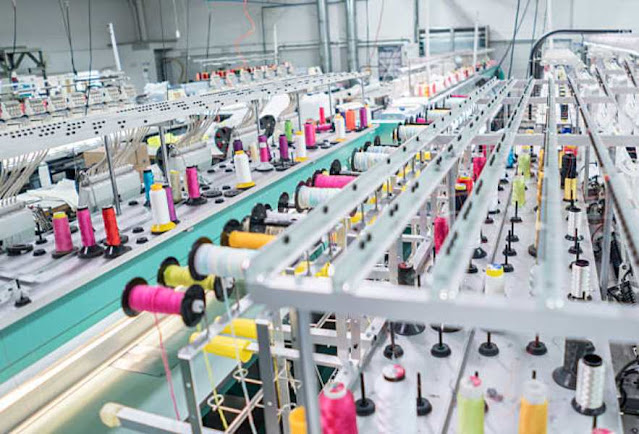
Revolutionizing Fabric Production with Advanced Technologies
Introduction
Fabric production has undergone a significant transformation
in recent years thanks to technological advancements. Traditional methods are
being complemented and, in some cases, replaced by innovative techniques that
enhance efficiency, sustainability, and design possibilities. This article
explores the revolution in fabric-making technology, showcasing the
cutting-edge processes that are reshaping the textile industry. From 3D
printing and digital weaving to sustainable materials and intelligent textiles,
these technologies propel fabric production into a new era of creativity and
sustainability.
3D Printing in Fabric Production
3D printing, also known as additive manufacturing, has
gained significant attention in various industries, including fabric
production. This technology enables the creation of complex and customizable
fabric structures that were previously difficult or impossible to achieve with
traditional methods. With 3D printing, intricate patterns, textures, and
designs can be produced directly onto the fabric, eliminating the need for
separate weaving or embroidery processes.
3D-printed fabrics offer numerous advantages, such as
enhanced durability, lightweight properties, and increased customization
options. They also facilitate the incorporation of functional elements, such as
pockets, hinges, or ventilation systems, directly into the fabric structure.
Additionally, 3D printing reduces waste by optimizing material usage, as only
the required material is used during production.
Digital Weaving and Computer-Aided Design
Digital weaving and computer-aided design (CAD) technologies
have revolutionized traditional weaving. With digital weaving, complex patterns,
and intricate designs can be created efficiently and accurately. Using
computerized looms allows for precise control over the weaving process,
resulting in consistent fabric quality and reduced production time.
CAD software plays a crucial role in the design phase by
enabling fabric designers to create intricate patterns, experiment with colors,
and visualize the final fabric output. These digital tools offer greater design
flexibility, enabling designers to push the boundaries of creativity and
produce fabrics with unique textures and visual effects.
Sustainable Materials and Manufacturing Processes
In response to growing environmental concerns, fabric-making
technologies increasingly focus on sustainability. Sustainable materials, such
as recycled fibers and organic fabrics, are gaining popularity in the textile
industry. Recycled polyester, for instance, is made from recycled plastic
bottles, reducing the reliance on virgin materials and mitigating environmental
impact.
Innovative manufacturing processes are also being developed
to minimize resource consumption and waste generation. One example is
"zero waste" cutting, which utilizes advanced algorithms and software
to optimize pattern layout and minimize fabric waste during the cutting phase.
This approach significantly reduces the environmental footprint of fabric
production.
Furthermore, fabrication and biotechnology are emerging as
potential game-changers in the industry. These processes involve using living
organisms, such as bacteria or yeast, to produce fabrics with desirable
properties. For instance, spider silk, known for its strength and elasticity,
can be produced by genetically modifying bacteria to produce proteins similar
to those found in spider silk.
Intelligent Textiles and Wearable Technology
Technology integration into textiles has given rise to the
concept of intelligent textiles. Smart textiles are fabrics that incorporate
electronic components, sensors, or other interactive elements to provide
additional functionalities. These textiles have diverse applications in various
fields, including fashion, healthcare, sports, and military.
For instance, intelligent textiles can include temperature-regulating
fabrics, which automatically adapt to the wearer's body temperature, providing
comfort in different weather conditions. In the healthcare sector, smart
textiles can monitor vital signs, detect changes in body posture, or deliver treatments.
Wearable technology, such as fitness trackers or
smartwatches, often relies on intelligent textiles to provide a comfortable and
discreet user experience. These textiles can integrate sensors seamlessly into
the fabric, allowing for continuous monitoring of health parameters or other
personalized data.
Conclusion
The fabric-making industry is being transformed by advanced
technologies that enhance efficiency, sustainability, and design possibilities.
These innovations reshape how fabrics are produced and utilized, from 3D
printing and digital weaving to sustainable materials and intelligent textiles.
The integration of technology offers new aesthetic possibilities, addresses
environmental concerns, and enables the creation of functional textiles with
enhanced performance. As these technologies advance, the fabric-making industry
will evolve further, leading to more sustainable, innovative, and versatile
fabrics that meet the needs of a rapidly changing world.